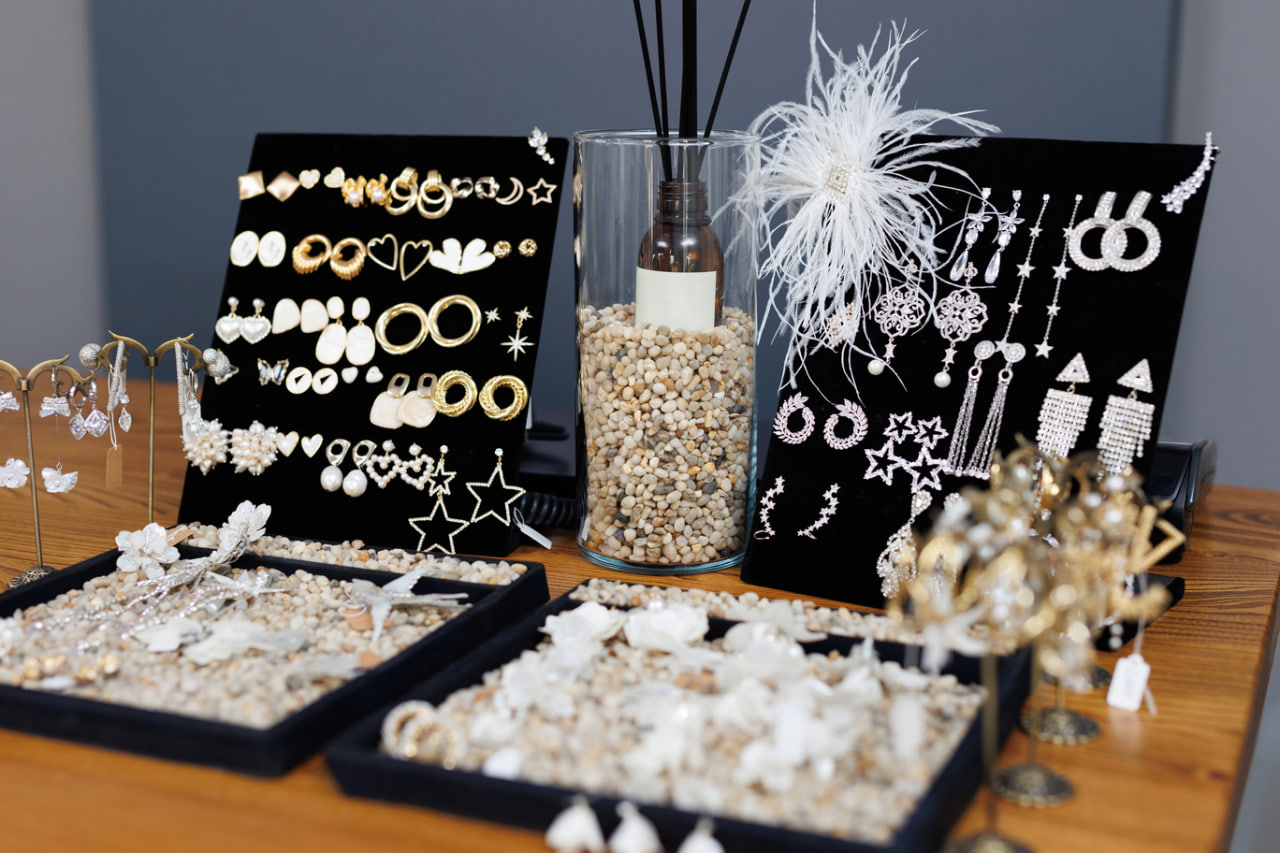Introduction to Jewelry-Making Tools
Creating handmade jewelry requires not only creativity and skill but also the proper tools. The right equipment ensures precision, safety, and efficiency while allowing designers to bring their visions to life. Whether you are crafting simple bracelets or intricate necklaces, investing in essential tools is the first step toward professional-quality results.
Jewelry-making tools vary depending on materials and techniques. From basic hand tools to specialized equipment, each item serves a specific purpose in cutting, shaping, connecting, and finishing jewelry pieces. Understanding their function and proper use is key to achieving consistent, polished results.
Pliers: The Backbone of Jewelry Making
Pliers are indispensable in jewelry creation, used for bending wire, opening and closing jump rings, and shaping metal components. There are several types of pliers every jewelry maker should have:
- Round-Nose Pliers – Ideal for forming loops, curves, and spirals in wire. They are essential for creating clasps, ear wires, and decorative elements.
- Chain-Nose Pliers – Feature flat, tapered jaws that allow gripping, bending, and manipulating small components in tight spaces.
- Flat-Nose Pliers – Perfect for holding, flattening, and straightening metal pieces. They provide stability when making precise bends.
- Bent-Nose Pliers – Useful for reaching awkward angles and working in areas that straight pliers cannot access.
Using pliers correctly minimizes damage to materials and improves accuracy, making them a foundational tool for both beginners and experienced jewelry makers.
Wire Cutters and Snips
Cutting tools are essential for trimming wire, chain, and other materials to the desired length. High-quality wire cutters ensure clean, smooth cuts without fraying or crushing the material.
- Flush Cutters – Provide precise, flat cuts ideal for fine wire and delicate projects.
- Side Cutters – Useful for thicker wire or chain, allowing for controlled cutting with minimal effort.
- Scissors for Beading – Designed for cutting threads, cords, and fine materials without fraying.
Proper cutting tools reduce material waste and prevent rough edges that can affect the overall appearance and safety of jewelry pieces.
Hammers and Mallets
Hammers are used for shaping, texturing, and flattening metal components. They come in various shapes and weights depending on their purpose.
- Ball-Peen Hammer – Used for shaping metal, creating textures, and forming domes.
- Chasing Hammer – Ideal for detailed work, flattening, and refining surfaces.
- Rawhide or Nylon Mallet – Provides gentle force without damaging delicate metals or finishes.
Hammers and mallets are critical for adding dimension, texture, and structural integrity to handmade jewelry. Mastering their use allows for more sophisticated and professional results.
Work Surfaces and Support Tools
A dedicated work surface ensures comfort, organization, and safety while crafting jewelry. Soft mats, benches, and bead boards help prevent materials from rolling away and protect delicate components from scratches.
- Bead Board – Provides layout guides for designing necklaces and bracelets before assembly.
- Jewelry Bench Block – Used as a stable surface for hammering, shaping, and cutting metals.
- Ring Mandrels and Bracelet Mandrels – Aid in forming consistent, precise rings and bangles.
Proper work surfaces streamline workflow, reduce errors, and enhance efficiency, making them essential for both hobbyists and professionals.
Files, Sandpaper, and Polishing Tools
Finishing is a crucial aspect of jewelry-making, and files, sandpaper, and polishing tools are used to refine edges, smooth surfaces, and add shine.
- Needle Files – Perfect for fine detail work, removing burrs, and shaping small components.
- Sandpaper or Emery Boards – Used to smooth surfaces and prepare metal or wood for polishing.
- Polishing Cloths and Buffing Wheels – Restore shine and remove tarnish, enhancing the overall appearance of the piece.
Attention to finishing ensures that every creation looks professional, safe, and visually appealing.
Tweezers, Magnifiers, and Safety Gear
Working with small components requires precision and protection. Tweezers, magnifiers, and safety gear are essential for detailed and safe crafting.
- Tweezers – Useful for picking up tiny beads, stones, and findings.
- Jeweler’s Loupe or Magnifying Glass – Helps inspect details and ensure accuracy in delicate work.
- Safety Glasses and Gloves – Protect your eyes and hands from sharp tools, hot glue, or soldering hazards.
Incorporating safety and precision tools improves both the quality and longevity of your work, reducing the risk of accidents or mistakes.
Storage and Organization Solutions
Keeping tools, materials, and small components organized is vital for efficiency and creativity.
- Toolboxes and Storage Trays – Keep pliers, cutters, and hammers accessible and tidy.
- Bead and Component Organizers – Separate beads, charms, and findings to prevent mix-ups and loss.
- Labeling Systems – Help track materials, colors, and sizes for streamlined workflow.
An organized workspace reduces frustration, saves time, and allows more focus on the creative process.
Investing in Quality Tools
While beginners may start with basic, affordable tools, investing in high-quality equipment pays off over time. Durable, ergonomic tools provide better control, accuracy, and comfort, allowing jewelry makers to work longer and more efficiently. Quality tools also reduce the likelihood of mistakes and material damage, ensuring that your creations meet professional standards.

